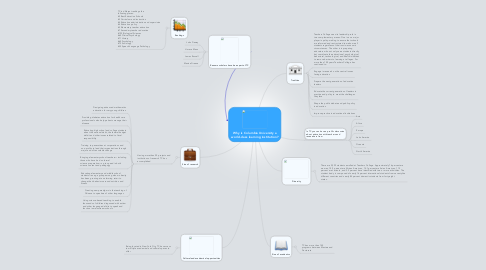Why is Columbia University a world-class learning institution?
by Julian Zapata

1. Renown scholars have been part of TC
1.1. John Dewey
1.2. Horace Mann
1.3. James Russell
1.4. Maxine Greene
2. Rankings
2.1. TC in different rankings the following places: #5 Best Education Schools #3 Curriculum and instruction #4 Education administration and supervision #4 Education policy #3 Elementary teacher education #7 Secondary teacher education #195 Biological Sciences #60 Clinical Psychology #71 History #60 Psychology #72 Sociology #35 Speech-Language Pathology
3. Size of research
3.1. Having more than 50 projects and institutions of research TC has accomplished
3.1.1. Designing advanced mathematics education for very young children
3.1.2. Providing diabetes education for health care professionals who help patients manage their disease
3.1.3. Educating high school and college students about the national debt, the federal budget deficit and other issues related to fiscal responsibility
3.1.4. Training top executives at corporations and non-profits to lead their organizations through major and often volatile change
3.1.5. Bringing elementary school teachers—including those who have had no formal science preparation—up to speed in both science content and pedagogy
3.1.6. Educating elementary and middle school students—an age group among whom obesity has been growing at an alarming rate—to change their behaviors around nutrition and fitness
3.1.7. Creating new paradigms in the teaching of Chinese to speakers of other languages
3.1.8. Using science-based teaching to enable thousands of children diagnosed with autism and other language deficits to speak and function in mainstream schools
4. Cultural and academical opportunities
4.1. Being located in New York City, TC has access to multiple academical and cultural spaces to offer
5. In TC you can have a prolific discussion about education with teachers and researchers from
5.1. Asia
5.2. Africa
5.3. Europe
5.4. Latin America
5.5. Oceania
5.6. North America
6. Size of academics
6.1. TC has more than 140 programs between Masters and Doctorate
7. Tradition
7.1. Teachers College sees its leadership role in two complementary arenas: One is as a major player in policy-making to ensure that schools are reformed and restructured to welcome all students regardless of their socio-economic circumstances. The other is in preparing educators who not only serve students directly but coordinate the educational, psychological, behavioral, technological, and health initiatives to remove barriers to learning at all ages. For more than 100 years Teachers College has continued to:
7.2. Engage in research on the central issues facing education
7.3. Prepare the next generation of education leaders
7.4. Educate the current generation of leaders in practice and policy to meet the challenges they face
7.5. Shape the public debate and public policy in education
7.6. Improve practice in educational institutions
8. Diversity
8.1. There are 5,299 students enrolled at Teachers College. Approximately 76 percent are women, 10.9 percent are African American, 14.1 percent are Asian American, 11.2 percent are Latino/a, and 3.5 percent have identified with two or more ethnicities. The student body is composed of nearly 16 percent international students from seventy-five different countries and nearly 84 percent domestic students from forty-eight states.

